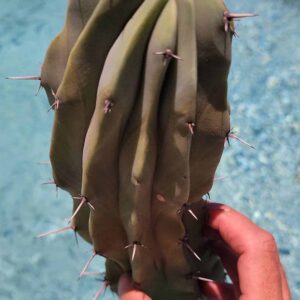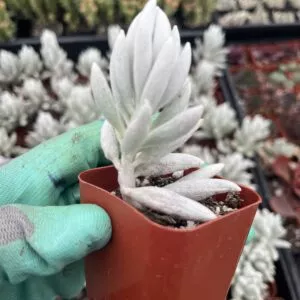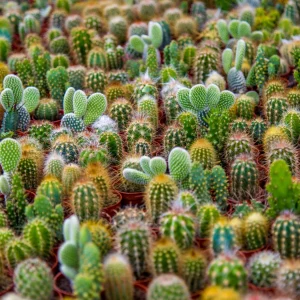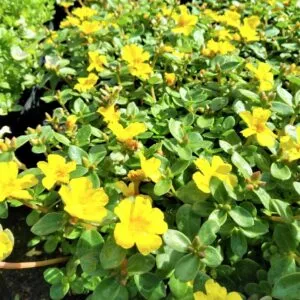No products in the cart.
The Arbutus tree will surely be an eye-catcher if you want a tree that bears delicate yet fragrant flowers with bright-colored fruits. There are two varieties, both having the name strawberry trees, the Arbutus marina, and Arbutus unedo.
The care for these trees is similar, but today we will focus on the Marina strawberry tree.
Plant Name: Arbutus marina
Other Name: Marina Strawberry Tree
Plant Type: Evergreen Trees
Native Areas: Western Europe to Mediterranean Region
Light Requirement: Full Sun to Partial Shade
Watering: Moderate
Fertilizer: Organic Mulch
Toxicity: Edible fruits
Temperature: Most temperatures
Propagation: Cuttings and Layering
Growth: 35 feet tall
Soil Type: Sandy, clay, or loamy soil
USDA Hardiness Zone: 7-10
More About Marina Strawberry Tree
Arbutus trees, such as the Marina strawberry trees, quickly grow into beautiful evergreens, reaching heights 35 feet tall and 25 feet wide. The deep green leaves get 4 inches long and have teethed margins. Marina is a hybrid specimen of an uncertain breed.
While the Arbutus unedo is a small shrub with red and yellow berries.
Thus, the unknown parentage resulted in the tree receiving the name Marina where it was found. The foliage to fruits stand out, and as the trees mature, the bark peels off, displaying a new reddish bark underneath.
In spring, you see pendulous clusters of rose-pink flowers followed in summer by orange-red berries that look like strawberry fruits in the fall. This strawberry tree’s parentage is unknown, but it was discovered in 1984 in San Francisco.
It is a single-trunk tree with a low branching habit when bought from nurseries. Hence, you can grow them in the yard, raised planters, or in containers on the patio. You find these trees growing abundantly throughout the year in Southern California.
Arbutus Marina Care Guide
 arbutus marina @erichunt
arbutus marina @erichunt
One fantastic thing about the strawberry tree is that it is not finicky, and you can plant them anytime without the concern of frost. You can plant young specimens in early fall or spring after the ice passes. The strawberry tree blooms and fruits attract birds to other pollinators to the garden.
Selecting a Planting Site For Arbutus Trees
The crucial thing is to provide your strawberry tree with a sunny spot that can tolerate some shade. Young trees will need some wind protection but can still withstand severe conditions. These outdoor trees can even handle salt runoff to salt sprays.
When planting more than one evergreen tree to form a hedge, we recommend spacing at least 35 feet apart, depending on your chosen cultivar. You may need to stake younger trees to provide them with support to mature and become hardy.
Also, ensure to remove all weeds from the ground in the landscape when planting these species.
Recommend Soil For Strawberry Trees
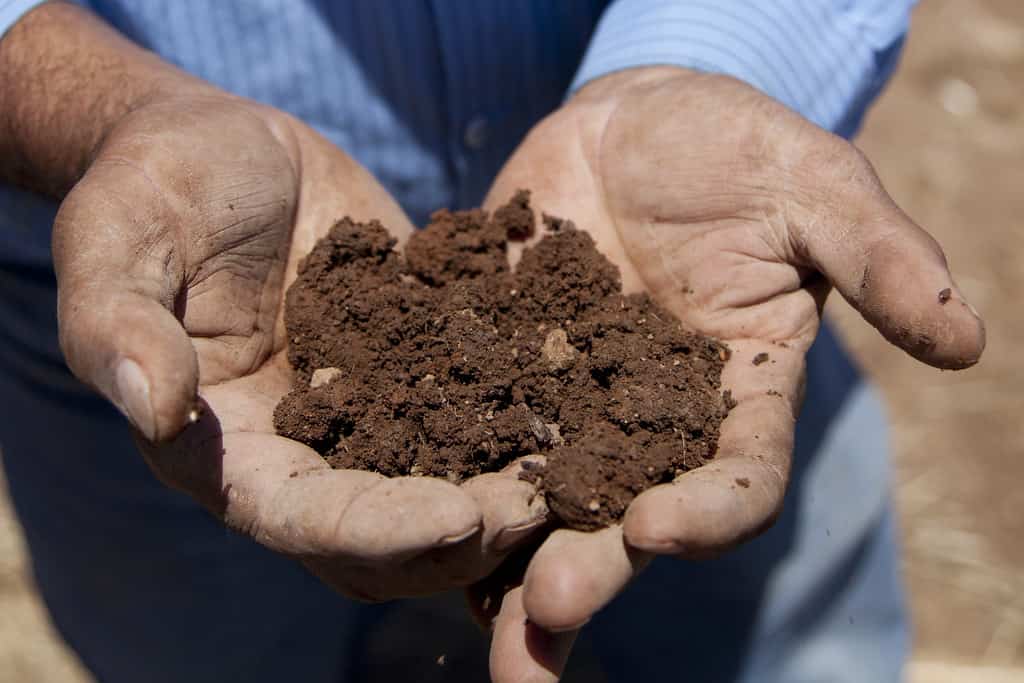 loamy, mineral rich clay soil @hanzellvineyards
loamy, mineral rich clay soil @hanzellvineyards
The strawberry tree does best in well-drained soil like sand, loamy, or clay soil with a higher acidic but slightly alkaline. Still, it can tolerate compacted soil and is drought-tolerant once established. But having good drainage is better as it helps prevent damage to the root system leading to root rot.
Lighting Needs For This Hybrid Tree
The flowers grow with enough sunlight, and it’s best to provide your strawberry tree with full sun and partial shade. The crucial thing when planted is for the tree to receive six hours of direct sunlight daily.
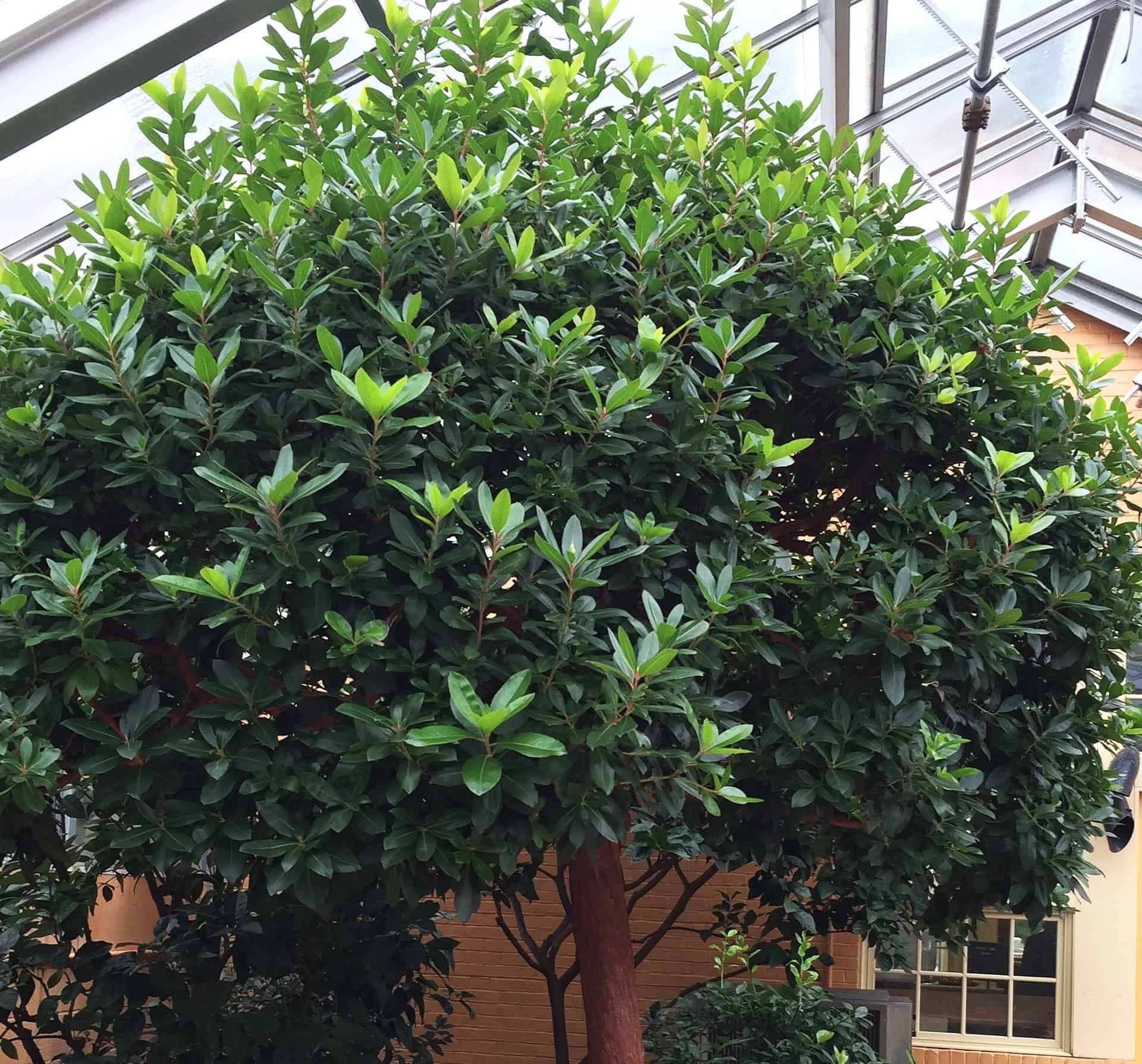
Watering
For the first growing season, your strawberry tree needs regular watering to become established with a strong root system.
As the tree matures, it becomes more drought-tolerant. You can plant to water about one inch a week, equal to the plant’s number of inches in the trunk diameter.
During the summer months, you will water more depending on the rain and less in winter.
Temperature and Humidity
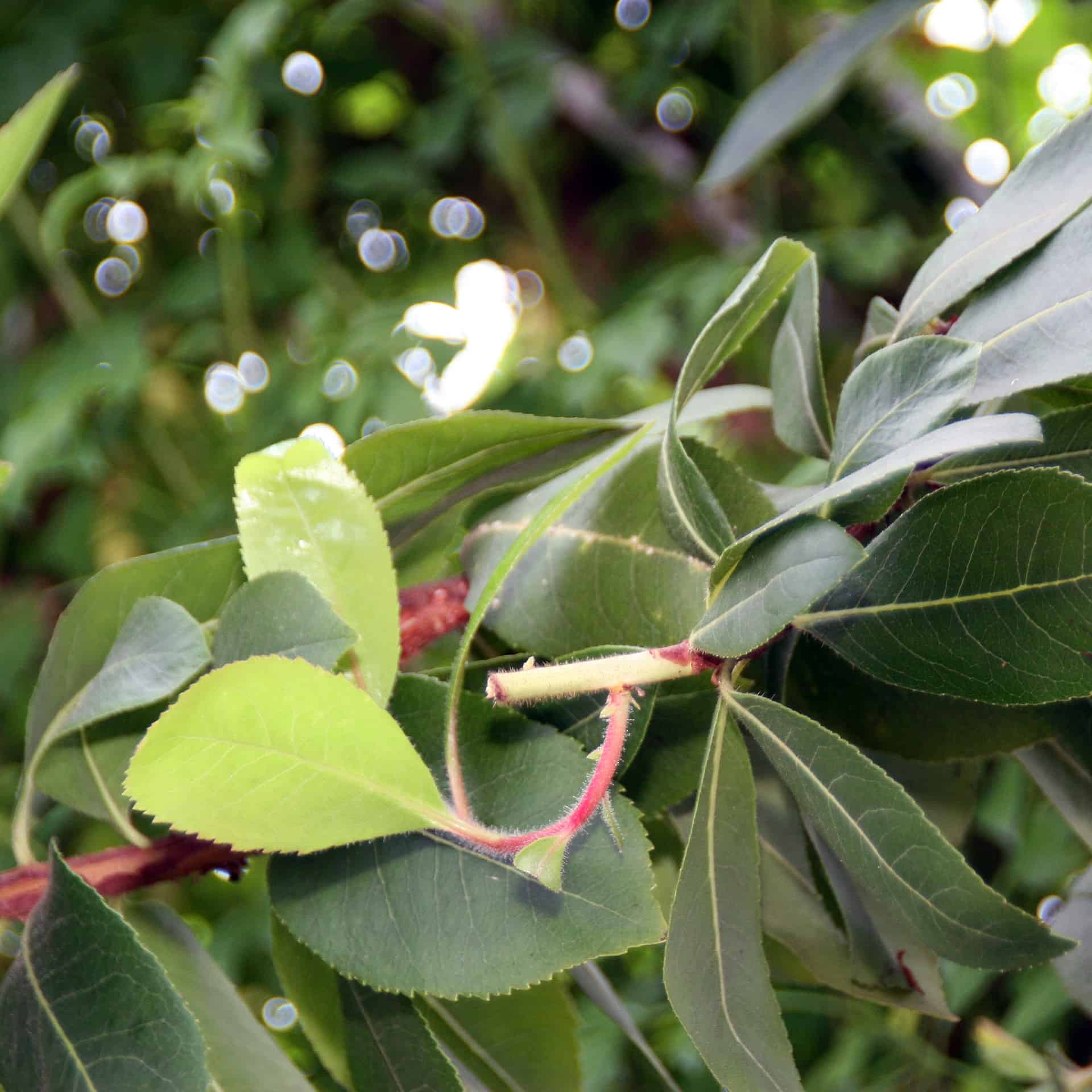
While the strawberry tree can thrive in warm temperatures to cold weather, it will become susceptible to problems in high-humidity regions. We recommend watering around the tree base instead of overhead watering.
Fertilizing The Strawberry Tree
Add three inches of organic mulch around the tree’s base in summer and winter to protect the roots. The mulch keeps the tree roots moist in the heat and protects them from frost in the colder months. In addition, it works as an organic slow-release fertilizer ideal for these trees.
Pruning Your Tree
You need not prune the strawberry tree unless the new growth grows incorrectly. Then, you can prune the dying, diseased, dead branches. The best time to prune is in late winter or early spring.
Nevertheless, you can prune your tree from a young age to form a single trunk.
-
$10.99Sold By: Succulent Oasis
Only 1 left in stock
Medium Succulent Plant – Aloe Aristata Haworthia
Rated 4.84 out of 5 based on 352 customer ratings09Sold By: Succulent Oasis -
Free Shipping$35.95Sold By: Cactucson
Only 1 left in stock
Myrtillocactus Geometrizans Cristata 13″ Cutting
Sold By: Cactucson -
Free Shipping$673.90Sold By: BONSAI WORLD LLC
In stock
Juniper Bonsai Tree – Trained in Jin Style (juniper procumbens na
Sold By: BONSAI WORLD LLC -
$4.59Sold By: Cacti and Exotica
In stock
Cocoon plant | 2″ Pot | Cactiandexotica
Rated 4.98 out of 5 based on 59 customer ratings01Sold By: Cacti and Exotica
Potting and Overwintering Strawberry Tree
In the genus Arbutus you can find two dwarf species to grow in containers. These are the Compacta and Oktoberfest. You can grow them in the direct sun away from winds.
The crucial thing is to choose well-drained soil to place in a pot about 14 inches deep and 24 inches wide. We recommend placing the pot on casters and ensuring it has enough drainage holes.
For younger trees, you must provide some burlap covering for the foliage, flowers, and berries in winter.
Propagating Strawberry Tree
To propagate the strawberry tree, you can use cuttings to grow into seedlings to plant outdoors. Yet, using this method does take patience.
Yet, using layering works best, and the best time to take cuttings is in early spring and using rooting hormone. Keep the cutting in bright indirect light until you can plant them outside.
Another alternative is to grow the seeds when harvested and place them in stratification to germinate.
We offer different types of strawberry tree seeds on our website for more options.
Arbutus Marina Similar Plants
In the genus Arbutus, you can find other container plants similar to the strawberry tree:
Elfin King
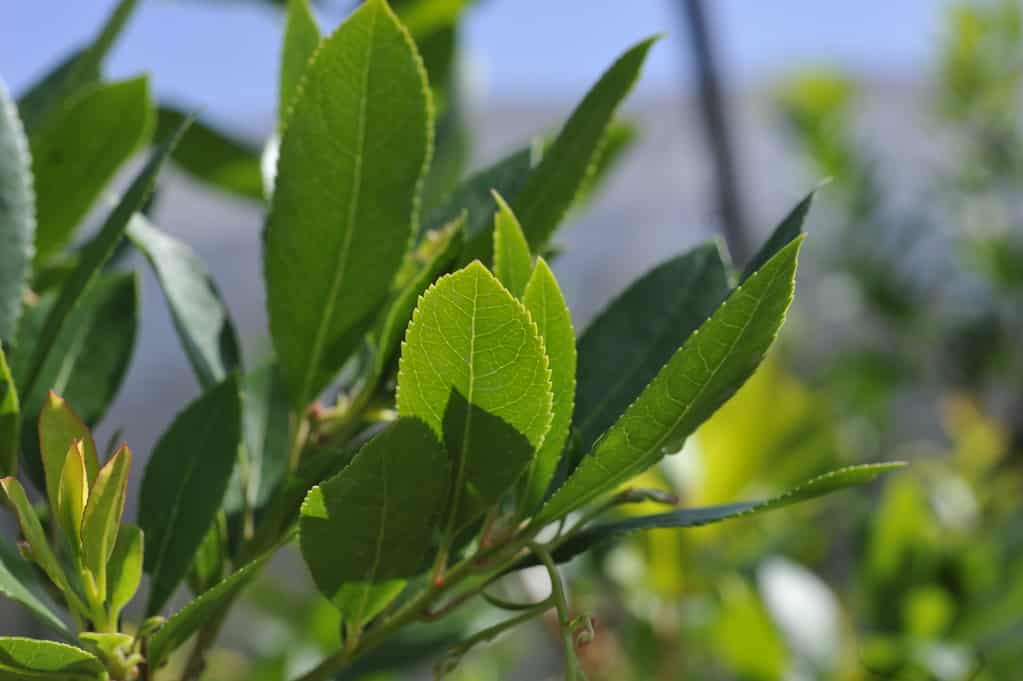 arbutus unedo elfin king @meganhansen
arbutus unedo elfin king @meganhansen
A slow-growing variety. With this strawberry tree, you will not need to pick up a lot of fallen fruit; it is a dwarf variety.
Rubra
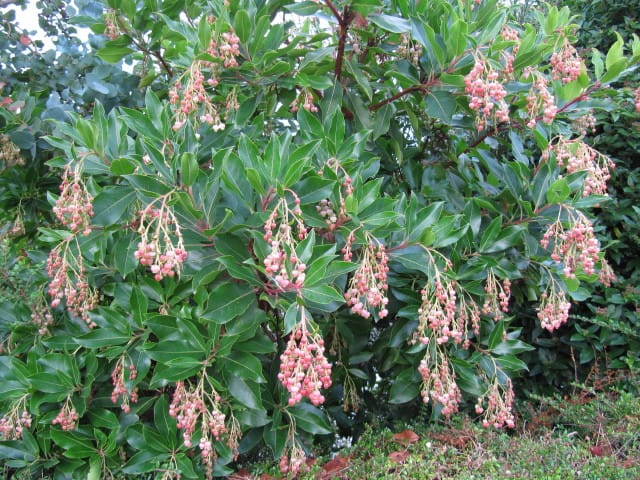 Arbutus unedo ‘Rubra’ @leonoraenking
Arbutus unedo ‘Rubra’ @leonoraenking
It is another cultivar producing deep pink flowers followed by berries.
Compacta
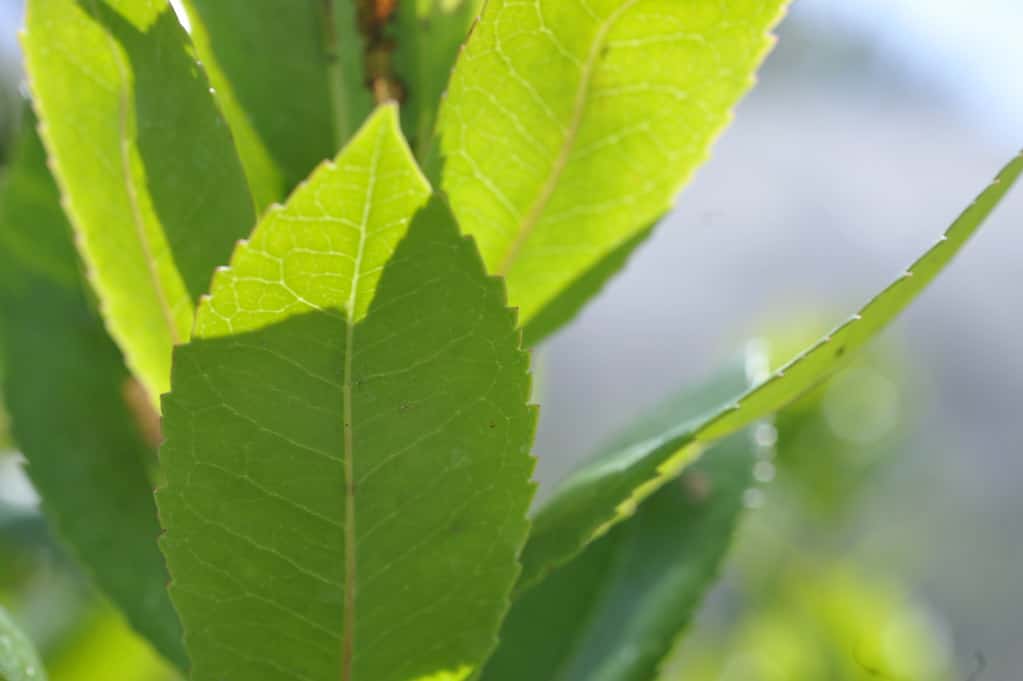 arbutus unedo compacta @meganhansen
arbutus unedo compacta @meganhansen
It is a dwarf strawberry tree that grows up to 12 feet high.
Oktoberfest
Another dwarf variety grows well in the garden and containers.
Arbutus Marina Common Diseases and Pests
The strawberry tree gets affected by different pests and diseases. Some concerns are root rot, leaf spots, leaf galls, anthracnose, sudden oak death, twig dieback, and Phytophthora. Pests on your tree are scale, thrips, leafminers, aphids, borers, and caterpillars.
Frequently Asked Questions
The berries look similar to a lychee, but it is not one, and it has the exact resemblance to a strawberry. The edible fruits, you need not peel the skin off as lychee.
Yes, the fruit you can eat, but it has a bland taste.
The tree makes for an eye-catching plant with flowers in pink and berries. But, unfortunately, people buy it more for foliage and flowers than fruit.
The strawberry tree can live up to 40 years or longer.
The fantastic news is you can find the strawberry tree available at Plantly and some other varieties.
Whether you want to buy, sell, or simply reach out to other plant enthusiasts, Plantly is the right place to be!
-
Free Shipping$8.96Sold By: CZ Grain
In stock
Cacti Seeds Mix – 50 Seeds – Cactus Species Mix – Ships from Iowa, USA – Grow Exotic Succulent Cacti
Only 900 available and it’s in 2 people’s basketRated 4.60 out of 5 based on 156 customer ratings00Sold By: CZ Grain -
$65.00Sold By: Via Citrus
$75.00In stock
Meyer Lemon Citrus – Indoor/Outdoor Citrus
Only 93 available and it’s in 5 people’s basketRated 4.92 out of 5 based on 237 customer ratings76Sold By: Via Citrus -
Free Shipping$17.99Sold By: Gar-Zen Botanical Design
In stock (can be backordered)
Purslane “Lemon Drops” Edible Herb Ships Free.
Only 22 available and it’s in 1 people’s basketRated 4.86 out of 5 based on 49 customer ratings00Sold By: Gar-Zen Botanical Design -
$34.99Sold By: Succulent Oasis
$40.99In stock
Large Bonsai ‘Money Tree’ Plant
Only 5 available and it’s in 1 people’s basketRated 4.84 out of 5 based on 352 customer ratings00Sold By: Succulent Oasis

